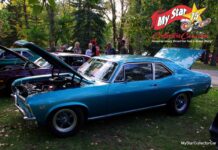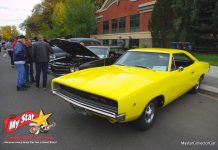Some of our MyStarCollectorCar readers might wonder why we refer to the 1970s as the “Me Decade”.
It was a term invented by writer Tom Wolfe in a 1976 New York magazine article about a then-young baby boomer generation.
Jim Sutherland
Me Decade was not a flattering term and referred to baby boomers as “the most ludicrous, self-absorbed and spoiled generation in the history of mankind”, an observation that readily applies to any younger generation before real life delivers a few solid uppercuts.

One thing was certain: Me Decade-era baby boomers were not buying giant luxury cars in the 1970s because these behemoths were not on their radar-unless the big cars were the transportation choice for a ride to the cemetery after an untimely “live-fast-die-young” misadventure.

On the other hand, full-sized domestic cars targeted a mature customer base that wanted generous portions of luxury and creature comforts in their upscale vehicles. The 1970s was a decade of massive changes in the domestic automotive field due to a deadly combination of fuel shortages and red tape avalanches putting a stranglehold on luxury cars during that tumultuous time frame.
However, the market for big domestic luxury cars was still healthy because their older, upwardly mobile buyers still wanted an overstuffed living room couch on wheels and was not overly concerned with tire-melting performance, mileage, or the land yacht’s giant price tag.

The 1970s was a time when Cadillac was still a gold standard for cars and a flagship in the land yacht fleet. The 1972 Cadillac Sedan de Ville oozed luxury because it had power everything so the big car could float down the road and eliminate every bump in the pavement along the way.

The front grille and headlight configuration on a ’72 Sedan de Ville was a bold enhancement of the big dollar Caddy’s wide stance and made the giant sedan really stand out in a crowd. The big 1972 Cadillac de Ville’s style was even bold enough to retain subtle tailfins-long after the tailfin craze was dead and buried by other domestic car makers. Mainly because the Cadillac brand set its own style standards in 1972.
One of Cadillac’s biggest rivals in the luxury yacht fleet was Lincoln, Ford’s answer to GM’s Caddy models in the high-end car battle. The Lincoln marque was eventually united with the Continental brand in the Ford family of fine cars and grew in both size and popularity over the years.

The 1977 Lincoln Continental Town Car was literally Cadillac’s biggest rival that year-and any year for that matter-because this big brute ranks among the largest vehicles that ever left a domestic car factory. In fact, the ’77 Lincoln Town Car already looked the part of a limo right from the get-go because of its massive size.

The “executive transport” label can be easily applied to domestic luxury cars from the past, but any debate about the king of this niche market would have to include the 1977 Lincoln Continental Town Car because it offered the ultimate combination of luxury, comfort, and sheer size that year. 1977 Lincoln Continental Town Cars were limousines trapped in a limousine body in every way.
The main players in the domestic car game were affectionally known as the Big Three (GM, Ford and Chrysler), so it is only fair to include the 1973 Imperial LeBaron, a giant car that got even larger with state-mandated 5 mph crash bumpers that year.

The ’73 Imperial LeBaron went directly from the Chrysler factory into the eye of the hurricane because it debuted the same year as the Arab Oil Embargo, a stormy period when gas was both scarce and expensive.
Fortunately, the big Mopars had enough creature comforts to make the outside world go away whenever their passengers climbed inside these opulent beasts of burden. Additionally, the cushy cavern known as the passenger compartment could easily house all the whistles and buzzers found in a 1973 Imperial LeBaron.

The Me Decade may have gotten its iconic handle from Tom Wolfe with his scathing assessment of a generation of whiny young narcissists, but the 1970s could have been labeled the Large-and-in-Charge Decade by land yacht owners from that era.
Jim Sutherland
BY: Jim Sutherland
Jim Sutherland is a veteran automotive writer whose work has been published by many major print and online publications. The list includes Calgary Herald, The Truth About Cars, Red Deer Advocate, RPM Magazine, Edmonton Journal, Montreal Gazette, Windsor Star, Vancouver Province, and Post Media Wheels Section.
- CLICK HERE to Sign Up for the Newsletter
- CLICK HERE to Like us on Facebook
- CLICK HERE to Follow us on Twitter
- CLICK HERE to Follow us on Pinterest

























































